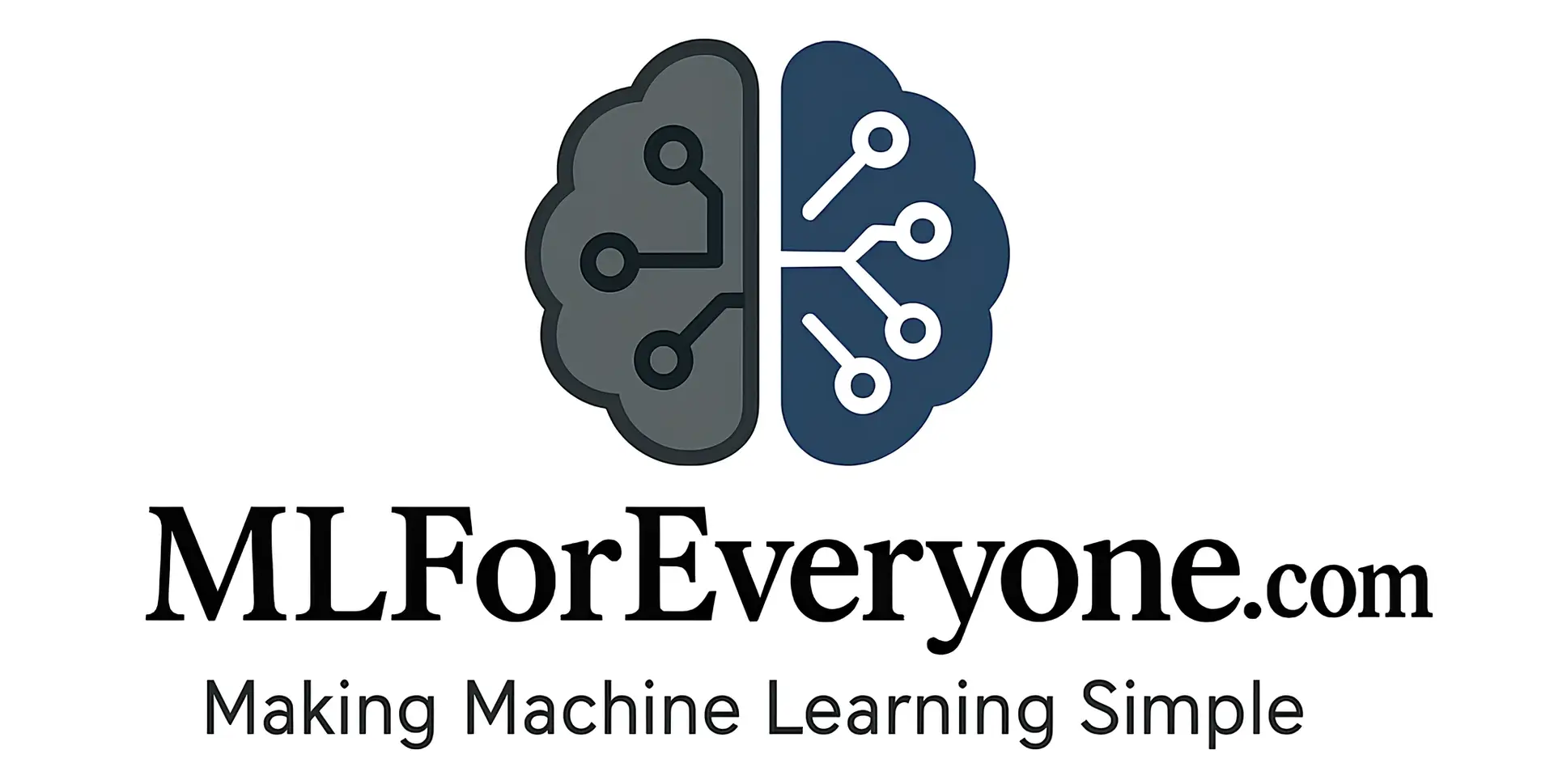Introduction
Welcome to the exciting world of machine learning! If you’re new to this field and looking to build practical skills, you’ve come to the right place. In this comprehensive guide, we’ll explore 10 beginner-friendly machine learning projects that you can implement using Python. These projects are designed to help you understand the core concepts while gaining hands-on experience. Whether you’re a student, professional, or just curious about AI, these projects will provide a solid foundation for your machine learning journey.
Project 1: Predicting House Prices
Dataset Overview
The housing dataset is one of the most popular datasets for beginners. It contains information about various features of houses (such as number of bedrooms, square footage, and location) and their corresponding prices. This dataset is perfect for learning regression techniques.
Step-by-Step Implementation
- Import Necessary Libraries
import pandas as pd
import numpy as np
from sklearn.model_selection import train_test_split
from sklearn.linear_model import LinearRegression
from sklearn.metrics import mean_squared_error- Load the Dataset
data = pd.read_csv('housing.csv')- Perform Exploratory Data Analysis (EDA)
print(data.head())
print(data.describe())- Split the Data
X = data.drop('price', axis=1)
y = data['price']
X_train, X_test, y_train, y_test = train_test_split(X, y, test_size=0.2, random_state=42)- Train the Model
model = LinearRegression()
model.fit(X_train, y_train)- Evaluate the Model
predictions = model.predict(X_test)
mse = mean_squared_error(y_test, predictions)
print(f"Mean Squared Error: {mse}")Code Explanation
This project introduces you to linear regression, one of the fundamental algorithms in machine learning. By predicting house prices, you’ll learn how to handle real-world data and make numerical predictions.
Project 2: Sentiment Analysis of Movie Reviews
Dataset Overview
The IMDb movie reviews dataset contains text reviews and corresponding sentiment labels (positive or negative). This project is perfect for learning natural language processing (NLP) basics.
Step-by-Step Implementation
- Import Libraries
import pandas as pd
from sklearn.model_selection import train_test_split
from sklearn.feature_extraction.text import CountVectorizer
from sklearn.naive_bayes import MultinomialNB
from sklearn.metrics import accuracy_score- Load the Dataset
data = pd.read_csv('imdb_reviews.csv')- Text Vectorization
vectorizer = CountVectorizer(stop_words='english')
X = vectorizer.fit_transform(data['review'])- Split the Data
X_train, X_test, y_train, y_test = train_test_split(X, data['sentiment'], test_size=0.2)- Train the Model
model = MultinomialNB()
model.fit(X_train, y_train)- Evaluate the Model
predictions = model.predict(X_test)
print(f"Accuracy: {accuracy_score(y_test, predictions)}")Code Explanation
Sentiment analysis is a powerful NLP technique used in various applications like social media monitoring and customer feedback analysis. This project teaches you text preprocessing and classification.
Project 3: Image Classification with MNIST Dataset
Dataset Overview
The MNIST dataset consists of handwritten digit images labeled from 0 to 9. It’s a classic dataset for learning image classification.
Step-by-Step Implementation
- Import Libraries
import numpy as np
import matplotlib.pyplot as plt
from sklearn.datasets import load_digits
from sklearn.model_selection import train_test_split
from sklearn.svm import SVC
from sklearn.metrics import accuracy_score- Load the Dataset
digits = load_digits()
X, y = digits.data, digits.target- Split the Data
X_train, X_test, y_train, y_test = train_test_split(X, y, test_size=0.2)- Train the Model
model = SVC()
model.fit(X_train, y_train)- Evaluate the Model
predictions = model.predict(X_test)
print(f"Accuracy: {accuracy_score(y_test, predictions)}")Code Explanation
Image classification is a fundamental computer vision task. This project introduces you to working with image data and using support vector machines (SVM) for classification.
Project 4: Customer Churn Prediction
Dataset Overview
The telecom customer churn dataset contains customer information and whether they canceled their service (churn). This project helps businesses understand why customers leave.
Step-by-Step Implementation
- Import Libraries
import pandas as pd
from sklearn.model_selection import train_test_split
from sklearn.ensemble import RandomForestClassifier
from sklearn.metrics import classification_report- Load the Dataset
data = pd.read_csv('customer_churn.csv')- Preprocess Data
data = pd.get_dummies(data, drop_first=True)- Split the Data
X = data.drop('churn', axis=1)
y = data['churn']
X_train, X_test, y_train, y_test = train_test_split(X, y, test_size=0.2)- Train the Model
model = RandomForestClassifier()
model.fit(X_train, y_train)- Evaluate the Model
predictions = model.predict(X_test)
print(classification_report(y_test, predictions))Code Explanation
Customer churn prediction is crucial for businesses. This project teaches you how to handle categorical data and use random forests for classification.
Project 5: Stock Price Prediction
Dataset Overview
Historical stock price data contains opening, closing, high, low prices, and trading volume. This project introduces time series analysis.
Step-by-Step Implementation
- Import Libraries
import pandas as pd
import numpy as np
from sklearn.model_selection import train_test_split
from sklearn.linear_model import LinearRegression
from sklearn.metrics import mean_absolute_error- Load the Dataset
data = pd.read_csv('stock_prices.csv')- Create Features
data['prev_close'] = data['close'].shift(1)
data = data.dropna()- Split the Data
X = data[['prev_close']]
y = data['close']
X_train, X_test, y_train, y_test = train_test_split(X, y, test_size=0.2)- Train the Model
model = LinearRegression()
model.fit(X_train, y_train)- Evaluate the Model
predictions = model.predict(X_test)
print(f"MAE: {mean_absolute_error(y_test, predictions)}")Code Explanation
Stock price prediction is an introduction to time series analysis. This project teaches you feature engineering and regression for sequential data.
Project 6: Spam Email Detection
Dataset Overview
The spam email dataset contains email text and labels indicating whether they’re spam or not. This project teaches text classification.
Step-by-Step Implementation
- Import Libraries
import pandas as pd
from sklearn.model_selection import train_test_split
from sklearn.feature_extraction.text import TfidfVectorizer
from sklearn.naive_bayes import MultinomialNB
from sklearn.metrics import accuracy_score- Load the Dataset
data = pd.read_csv('spam_emails.csv')- Text Vectorization
vectorizer = TfidfVectorizer(stop_words='english')
X = vectorizer.fit_transform(data['email_text'])- Split the Data
X_train, X_test, y_train, y_test = train_test_split(X, data['label'], test_size=0.2)- Train the Model
model = MultinomialNB()
model.fit(X_train, y_train)- Evaluate the Model
predictions = model.predict(X_test)
print(f"Accuracy: {accuracy_score(y_test, predictions)}")Code Explanation
Spam detection is a practical application of NLP. This project teaches you about TF-IDF vectorization and text classification.
Project 7: Recommendation System
Dataset Overview
The movie ratings dataset contains user ratings for various movies. This project introduces collaborative filtering.
Step-by-Step Implementation
- Import Libraries
import pandas as pd
from sklearn.model_selection import train_test_split
from sklearn.metrics.pairwise import cosine_similarity- Load the Dataset
data = pd.read_csv('movie_ratings.csv')- Create User-Item Matrix
user_item_matrix = data.pivot(index='user_id', columns='movie_id', values='rating').fillna(0)- Calculate Similarity
user_similarity = cosine_similarity(user_item_matrix)- Make Predictions
def recommend_movies(user_id, num_recommendations=5):
similar_users = user_similarity[user_id].argsort()[-num_recommendations:]
recommended_movies = data[data['user_id'].isin(similar_users)]['movie_id'].unique()
return recommended_moviesCode Explanation
Recommendation systems power many popular platforms like Netflix and Amazon. This project teaches you collaborative filtering and similarity calculations.
Project 8: Credit Card Fraud Detection
Dataset Overview
The credit card transactions dataset contains transaction details and fraud labels. This project deals with imbalanced datasets.
Step-by-Step Implementation
- Import Libraries
import pandas as pd
from sklearn.model_selection import train_test_split
from sklearn.ensemble import RandomForestClassifier
from sklearn.metrics import classification_report
from imblearn.over_sampling import SMOTE- Load the Dataset
data = pd.read_csv('credit_card_fraud.csv')- Handle Imbalance
smote = SMOTE()
X_resampled, y_resampled = smote.fit_resample(data.drop('fraud', axis=1), data['fraud'])- Split the Data
X_train, X_test, y_train, y_test = train_test_split(X_resampled, y_resampled, test_size=0.2)- Train the Model
model = RandomForestClassifier()
model.fit(X_train, y_train)- Evaluate the Model
predictions = model.predict(X_test)
print(classification_report(y_test, predictions))Code Explanation
Fraud detection is a critical application of machine learning. This project teaches you about handling imbalanced data and evaluating classification models.
Project 9: Wine Quality Prediction
Dataset Overview
The wine quality dataset contains chemical properties of wines and quality scores. This project combines regression and classification.
Step-by-Step Implementation
- Import Libraries
import pandas as pd
from sklearn.model_selection import train_test_split
from sklearn.ensemble import RandomForestRegressor
from sklearn.metrics import mean_squared_error- Load the Dataset
data = pd.read_csv('wine_quality.csv')- Split the Data
X = data.drop('quality', axis=1)
y = data['quality']
X_train, X_test, y_train, y_test = train_test_split(X, y, test_size=0.2)- Train the Model
model = RandomForestRegressor()
model.fit(X_train, y_train)- Evaluate the Model
predictions = model.predict(X_test)
print(f"MSE: {mean_squared_error(y_test, predictions)}")Code Explanation
Wine quality prediction demonstrates how machine learning can be applied to quality control in industries. This project teaches regression with multiple features.
Project 10: Face Recognition
Dataset Overview
The face recognition dataset contains images of faces with identity labels. This project introduces computer vision techniques.
Step-by-Step Implementation
- Import Libraries
import numpy as np
import cv2
from sklearn.model_selection import train_test_split
from sklearn.svm import SVC
from sklearn.metrics import accuracy_score- Load the Dataset
# Using OpenCV to load images from directories
face_cascade = cv2.CascadeClassifier('haarcascade_frontalface_default.xml')- Preprocess Images
def detect_faces(image_path):
img = cv2.imread(image_path)
gray = cv2.cvtColor(img, cv2.COLOR_BGR2GRAY)
faces = face_cascade.detectMultiScale(gray, 1.3, 5)
for (x,y,w,h) in faces:
face = gray[y:y+h, x:x+w]
return cv2.resize(face, (100, 100)).flatten()
return None- Create Features and Labels
X = []
y = []
for label in os.listdir('face_dataset'):
for image in os.listdir(f'face_dataset/{label}'):
face = detect_faces(f'face_dataset/{label}/{image}')
if face is not None:
X.append(face)
y.append(label)- Split the Data
X_train, X_test, y_train, y_test = train_test_split(X, y, test_size=0.2)- Train the Model
model = SVC()
model.fit(X_train, y_train)- Evaluate the Model
predictions = model.predict(X_test)
print(f"Accuracy: {accuracy_score(y_test, predictions)}")Code Explanation
Face recognition is a cutting-edge application of machine learning. This project teaches you image preprocessing, feature extraction, and working with computer vision libraries.
Conclusion and Next Steps
By completing these 10 beginner-friendly machine learning projects, you’ve gained valuable hands-on experience with various algorithms, datasets, and techniques. Each project was designed to build upon the previous one, helping you develop a comprehensive understanding of machine learning.
Next Steps:
- Experiment with different algorithms for each project
- Try improving model performance through hyperparameter tuning
- Explore more complex datasets and projects
- Consider deploying your models as web applications
- Join machine learning communities to share your projects and learn from others
Remember, the key to mastering machine learning is consistent practice and curiosity. Happy coding and welcome to the fascinating world of AI!




Leave a Reply